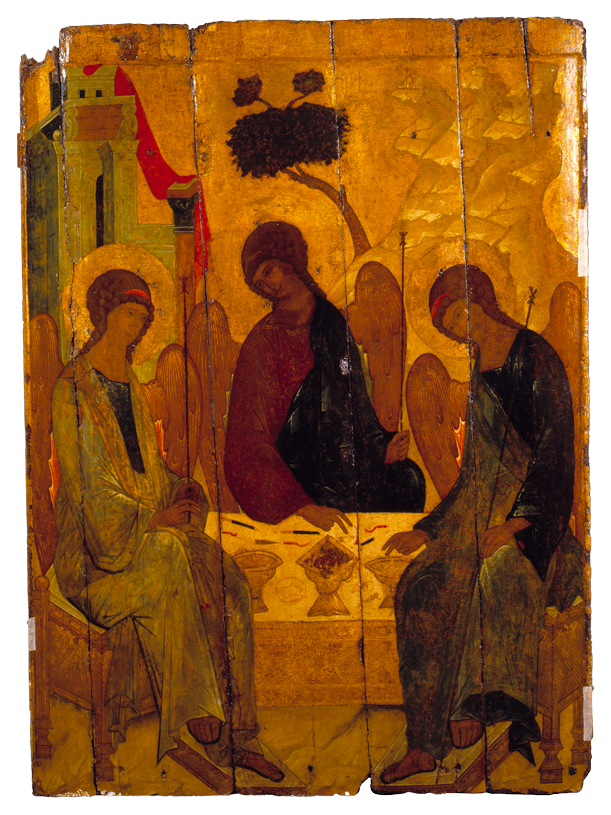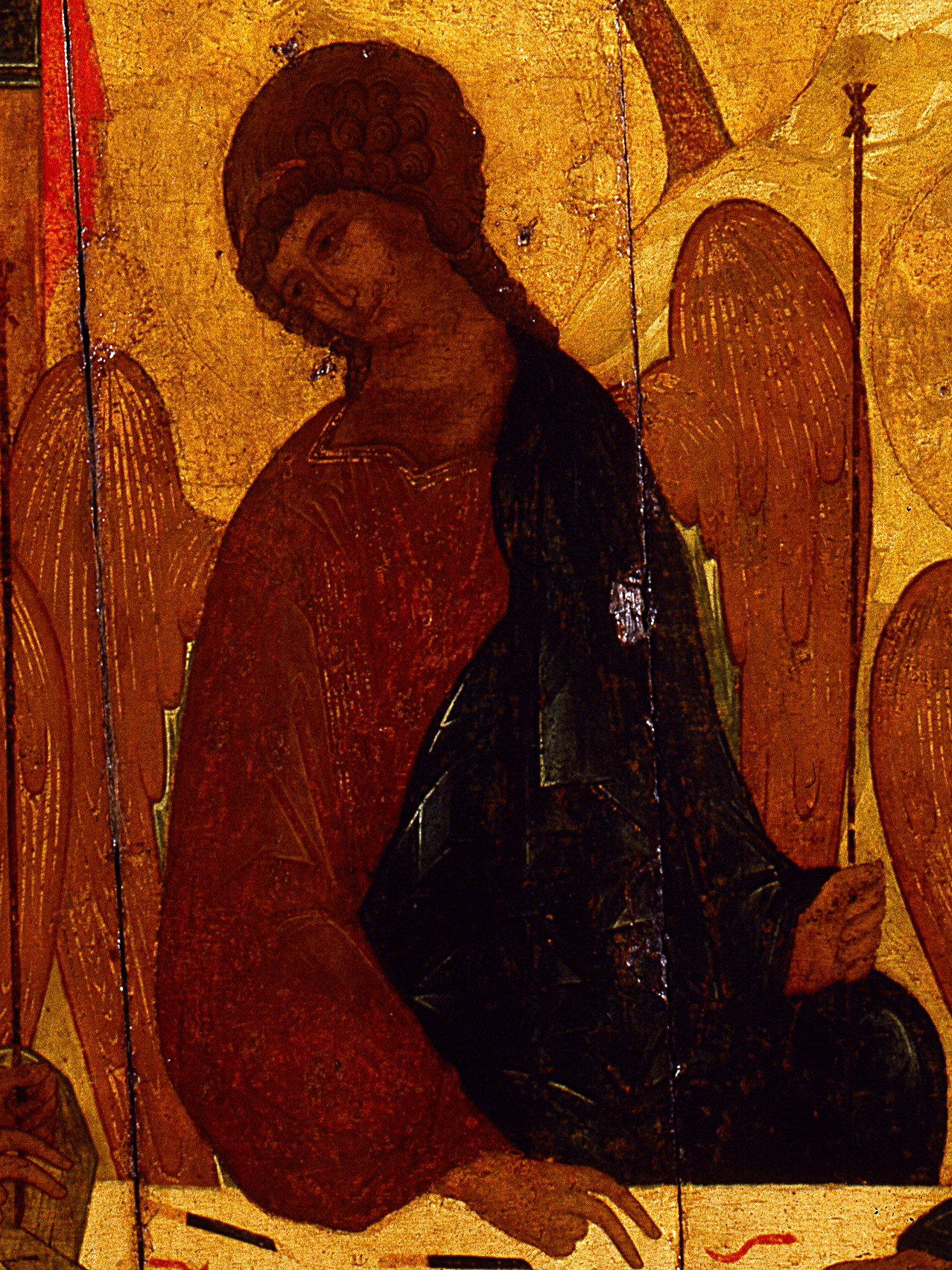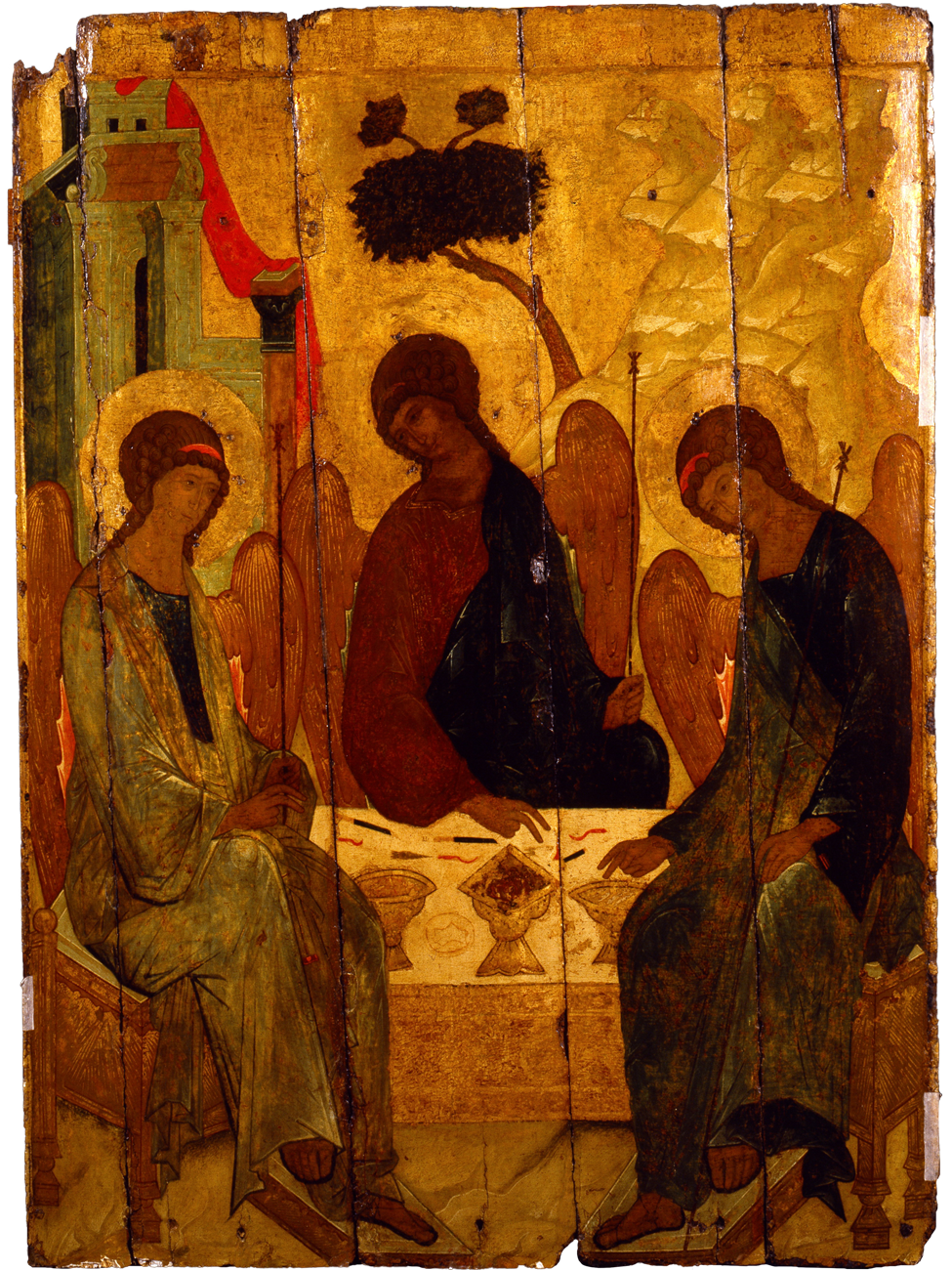Icon. Old Testament Trinity



The “Old Testament Trinity” icon is one of the earliest copies of the composition of the famous work by Andrei Rublev, created a hundred years after the original. The icon was created by an outstanding Moscow craftsman for the Church of the Intercession of the Blessed Virgin, consecrated in December 1513, in the Moscow Region residence of Grand Duke Vasily III - “The New Village of Oleksandrovsky”. This is one of the most common scenes of Christian art, dating back to Genesis (Genesis, ch. 18, v. 18), which tells about the visit of three angels to the forefather Abraham (in the New Testament tradition - God the Father, God the Son, and God the Holy Spirit) . There are two main variants of painting this plot: as the "hospitality" of Abraham and as the image of the Triune Divinity. It is the second option that is embodied in the iconography of that art piece.
The Pokrovsky Cathedral is one of the earliest buildings of the Grand-Ducal court of the Alexandrovskaya Sloboda. The date of its consecration is recorded in the liturgical collection of the first half of the 16th century of the library of the Trinity-Sergius Lavra: “In the summer of 7022 (1513) December 11, the Church of the Intercession of the Holy Virgin in the new village in Oleksandrovsky ... was blessed.” The Pokrovsky Cathedral is the third largest after the Assumption and Archangel Cathedrals of the Moscow Kremlin.
The icon “Old Testament Trinity” is one of masterpieces in the collection of Old Russian paintings of the Historical Museum. This is one of the most common scenes of Christian art, dating back to Genesis, which tells about the forefather Abraham visited by three angels. The biblical story tells that in the deepest antiquity, two thousand years before Christ, three mysterious travelers came to the righteous Abraham, who received them from his tent under the oak of Mamre. And it was announced to Abraham that he would give birth to a son, Isaac, from his aged wife Sarah, and that “a great and strong people will surely come from Abraham, and all the nations of the earth will be blessed” (Genesis, ch. 18, v. 18). In the New Testament tradition, the event is interpreted as a manifestation to the righteous Abraham of God the Father, God the Son, and God the Holy Spirit in form of three angels. There are two main variants of painting this plot: as the "hospitality" of Abraham and as the image of the Triune Divinity. It is the second option that is embodied in the iconography of that art piece.
The icon of the Old Testament Trinity was created by an outstanding Moscow craftsman for the Church of the Intercession of the Blessed Virgin Mary consecrated in December 1513 in the Moscow Region residence of Grand Duke Vasily III - the “New Village of Oleksandrovsky”. After the revolution of 1917, the image was placed in the “Aleksandrovskaya Sloboda” museum, where icons and liturgical objects were brought from closing neighboring churches; from there in 1941 it was transferred to the Historical Museum.
The closest iconographic and stylistic analogy to the icon from the Historical Museum is the “Old Testament Trinity” of the late 15th – early 16th century from the Petropavlovsk Chapel of the Assumption Cathedral of the Moscow Kremlin. Consequently, the icon from the Moscow cathedral church served as a model for the craftsman who performed the grand prince's order for the Moscow region residence. The icon from the Pokrovsky Church belongs to the circle of the most ancient copies of the famous “Trinity” by Andrei Rublev, accurately reproducing the iconographic scheme and the overall composition of the famous Lavra icon. The contours, postures, draping of robes and gestures of angels are repeated. The bends of their heads, shoulders, wings, as it were, form a circle - a symbol of eternity. However, there are differences. The fact is that accurate copies of icons were never made (throughout the history of icon painting there are no two absolutely identical icons). In its color "Trinity" from the Pokrovsky Church is a bit darker than the protograph. Insignificant deviations from the original reflected in a greater dryness of the drawing, and a more magnificent interpretation of architecture and landscape.


